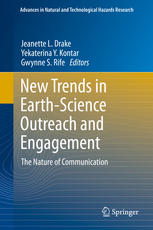

Most ebook files are in PDF format, so you can easily read them using various software such as Foxit Reader or directly on the Google Chrome browser.
Some ebook files are released by publishers in other formats such as .awz, .mobi, .epub, .fb2, etc. You may need to install specific software to read these formats on mobile/PC, such as Calibre.
Please read the tutorial at this link: https://ebookbell.com/faq
We offer FREE conversion to the popular formats you request; however, this may take some time. Therefore, right after payment, please email us, and we will try to provide the service as quickly as possible.
For some exceptional file formats or broken links (if any), please refrain from opening any disputes. Instead, email us first, and we will try to assist within a maximum of 6 hours.
EbookBell Team

4.1
20 reviewsPerhaps just as perplexing as the biggest issues at the core of Earth science is the nature of communicating about nature itself. New Trends in Earth-Science Outreach and Engagement: The Nature of Communication examines the processes of communication necessary in bridging the chasm between climate change and natural hazard knowledge and public opinion and policy. At this junction of science and society, 17 chapters take a proactive and prescriptive approach to communicating with the public, the media, and policy makers about the importance of Earth science in everyday life.
Book chapters come from some 40 authors who are geophysical scientists, social scientists, educators, scholars, and professionals in the field. Bringing diverse perspectives, these authors hail from universities, and research institutes, government agencies, non-profit associations, and corporations. They represent multiple disciplines, including geosciences, education, climate science education, environmental communication, and public policy. They come from across the United States and around the world. Arranged into five sections, the book looks at geosciences communication in terms of:
1) Education
2) Risk management
3) Public discourse
4) Engaging the public
5) New media
From case studies and best practices to field work and innovations, experts deliver pragmatic solutions and delve into significant theories, including diffusion, argumentation, and constructivism, to name a few.
Intended for environmental professionals, researchers, and educators in the geophysical and social sciences, the book emphasizes communication principles and practices within an up-to-the-minute context of new environmental issues, new technologies, and a new focus on resiliency.